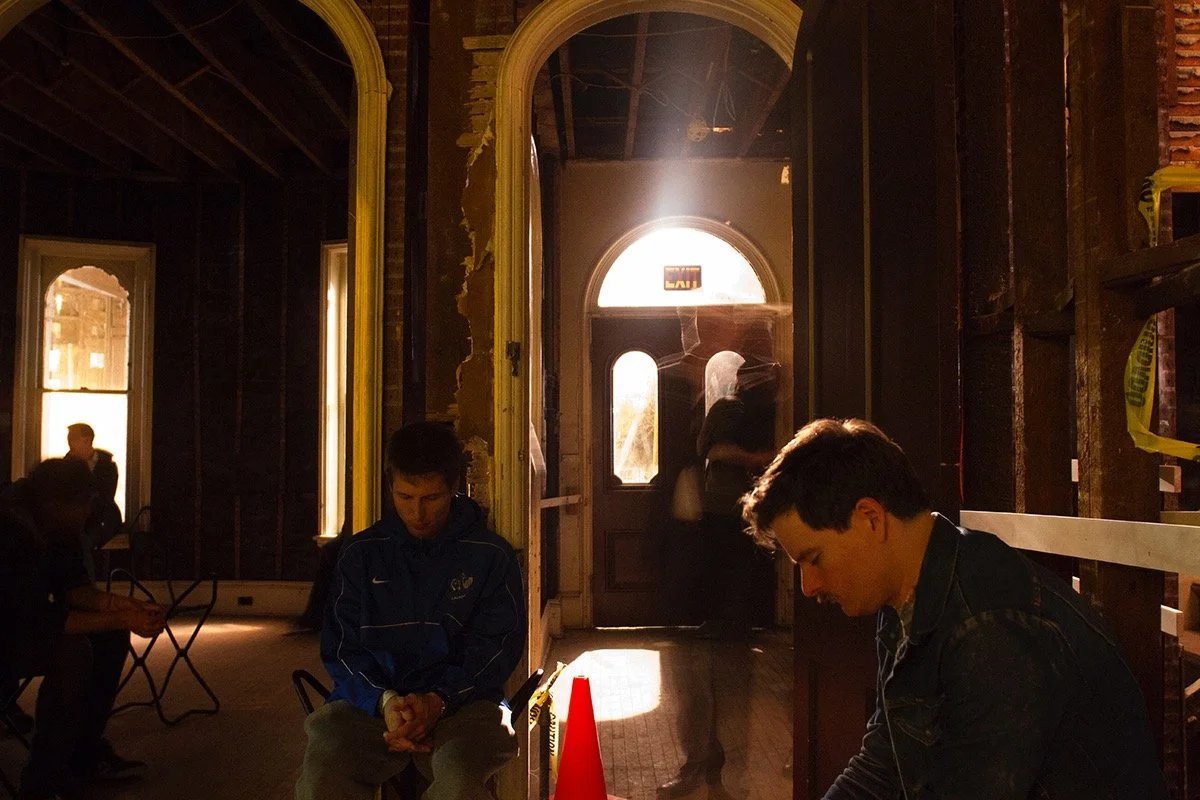Kevin Beasley: And in My Dream I Was Rolling on the Floor
Curated by Rose Bouthillier and Megan Lykins Reich
moCa Cleveland and Cozad-Bates House, Cleveland
April 12, 2014
When we started speaking about potential sites for a new sound piece in Cleveland, Kevin Beasley and I kept circling around the Cozad-Bates house, an empty, derelict mansion that sits across the street and down the block from the Museum of Contemporary Art. Built in 1853 by a prominent abolitionist family, it stands still, loaded and anachronistic in the midst of a rapidly changing neighborhood. Beasley was wary of the site as a relic, weighed down by historical narratives: “its greatest potential is as an active generator of thoughts, ideas and experiences. So how do we consider the history of a site and contextualize it in a way that also becomes a part of its history, or rather, where we are aware of the shape and form of that history we are creating?”
On site visits he spent hours in the house with recording equipment, listening, shifting weight, picking up low lows – rumblings, echoes. He roamed the surrounding streets, observing daily rhythms and rituals, overhearing conversations, attending to the background. The resulting composition, And in My Dream I Was Rolling on the Floor (2014), developed in four parts corresponding to sunrise, high noon, sunset, and night. These intervals provided entirely different tones and temperatures to soak in, emphasizing the durational aspects of the work. As dawn broke on the day of the performance, people filtered into the house, wandering sleepy eyed through the open, rough rooms. One section of the piece consisted entirely of birdsong, filling the space and growing louder with the light, making the brick walls seem diaphanous. From room to room the eight-channel composition was split and woven; as you wandered the tone of it shifted, you felt it differently. A match lighting. Air being sucked out of a room. Dropping. Seeping.
The clattering rhythm of train tracks. Haunting, stretched out chords of a church organ. Footsteps. A child describing his dream. Moments in the composition felt very clear; others much more complicated, dense, and layered with samples and synths into waves of sound, a morphing script of atmosphere. There was aloneness and oneness; sound felt so deeply in my body that I felt like a conductor, shaken. Afterwards, re-wired, different things felt possible. That is it, the most essential thing, the work moving outwards and through things and shifting what it touches. “Sound has the ability to be located and to come from somewhere very specific, but then descend into this abstraction and you can’t describe why you’re into it. Certain chord changes in music just make people cry. It’s powerful in a way that we realize we need in order to survive.”
— Excerpt from “Kevin Beasley: Energy Accumulates,” CURA., No. 22, Summer 2016: 112-125. All quotes by Kevin Beasley, interview with the author, 2016.




